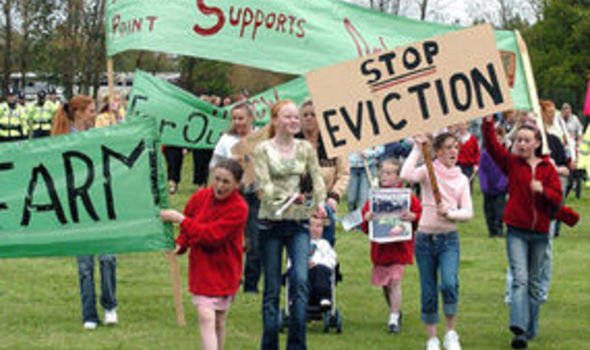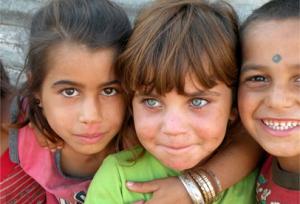Ilana Cone Kennedy, the Holocaust Center's Director of Education, was in the building that day. The Holocaust Center is located in the Jewish Federation building. As a recent winner of the Pamela Waechter Jewish Communal Professional Award, Ilana writes of her experiences that day, and remembers Pam's contributions to the community.
I am honored to have recently been selected as a recipient of the Pamela Waechter Jewish Communal Service Award. Having known and admired Pam, this award is especially meaningful to me.
In a recent discussion about the award, two of the Holocaust Center’s college interns casually asked me, “Who was Pam?”
Five years ago already, and still my hands shake when called upon to describe that day: Friday, July 28, 2006.
I wasn’t shot. In fact, I never even saw the gunman until I was in the courtroom with him almost two years later. But I was there. I heard it all. I felt it. I could smell it.
“In the building.” That’s how people referred to our small group. Yes, we were in the building on that Friday afternoon when Naveed Haq forced his way in and shot six women, some more than once, killing one of them and holding another hostage. He was angry at Jewish people for the world situation. He looked up Jewish organizations online and chose his target.
I was “in the building” when it happened — on the floor below where the shooting occurred. It was a warm Friday afternoon. I was seven months pregnant and just beginning my fourth year as director of education at the Washington State Holocaust Education Resource Center.
I heard popping. Screaming. In an instant my mind sorted through its familiar sounds trying to make sense of the situation. A party? Banging. Falling. More screaming. Popping noises. Thuds. Furniture falling? People falling? I had never heard such terrified, pain-filled screams. I knew it was gunshots.
I started to run to the back entrance of the Holocaust Center, where the door opens to a hallway that leads to the staircase up to the Federation’s lobby. A person came running screaming down the hall. Don’t go that way, I told myself. I quickly closed the door and locked it.
The popping noise was moving above me. Multiple shooters? Multiple guns? My colleagues? My friends? I turned off the lights so it looked like no one was here. I grabbed my bag and dialed 911 on my cell phone. My coworker Kami and I rushed out the front entrance.
Standing on the sidewalk just outside the Federation’s and Holocaust Center’s entrances, the 911 operator was on the phone with me. I looked up at the Federation’s second-story windows, trying to see something. I can still hear the screaming. My coworkers. Who was screaming?
“Someone is shooting,” I explained to the operator. I heard my call years later, in 2009 — in the second trial against Naveed Haq. I always wondered what I must have sounded like. Nervous, shocked, but surprisingly calm.
We hurried to the corner and headed up Lenora. On Lenora, people rushed out the Federation’s side entrance. Panic-stricken. Wide-eyed. Running.
Just as I reached the side entrance, Christina came out. She stopped in the doorway, and looked at Kami and me on the sidewalk. She was panicked and covered in blood from her neck to her knees. She collapsed to the ground and her blood flowed onto the sidewalk by my feet. With remarkable speed Kami took her own white sweater and tried to find where the blood was coming from.
I was still on the phone with 911 — the operator urged me not to hang up. Again from the recording I later heard in the courtroom, I was trying to explain that someone had been shot and was bleeding. I was trying to describe our location. And then I saw a tall policeman behind me.
Chaos. How many gunmen? Was he/were they still in there? How many people were still in the building? Who had been shot?
The police moved us further up the street so they could surround the building. The SWAT team came. How long was this? Minutes? Everyone from inside the building collected in front of Starbucks.
Christina’s limp body was there too, in a puddle of blood as paramedics worked to save her.
I looked around. Cheryl was on the corner across the street. Bewildered. Why was she sitting down, I wondered? Molly ran toward us, as did Cheryl’s niece. Dayna was on a stretcher, as was Carol. I started to cry when I saw Dayna. Like me, she was pregnant. Oh God, what happened?
Confusion. Shock. The media arrived. My husband and sister suddenly were at my side. The news had already broadcast that a pregnant woman had been shot. Jon thought it was me. It wasn’t. Crazy luck.
Hours went by. A small bus took those of us who were “in the building” but not needing medical attention to the police station. We all compared stories, made phone calls, tried to figure out what happened. Who was missing? Did someone die? We didn’t yet know. Kami and I sat with a piece of paper in the back of the bus. We made lists and lists of the people we thought had been there that afternoon. Who was not with us? Did one of “us” die?
Hours more at the police station, as we all gave our statements. Then, the longest day was over. Jon picked me up. We went home. It was getting dark.
My lovely friend thoughtfully dropped off flowers. An email went out to our neighborhood: “Heads up everyone — this is one of our neighbors.”
I couldn’t eat. I could hardly talk. I was home, but nothing looked like it had that morning. I was bewildered and frightened. I went to bed that night wondering if someone might come to get me because I am Jewish and maybe they wanted to finish the job.
Pam Waechter was killed. Pam. Pam — who my parents knew from when we were members of Temple B’nai Torah when it was in a tiny building on Mercer Island. Pam — who had just given me suggestions on possible locations for events. Pam — who had never done anything to anyone. This man took her life away.
Pam was a Jew by choice — she had chosen this religion, people, and history to be her own. She committed herself to this community with passion. She became president of her synagogue, president of the region for the Union of Reform Judaism. She headed committees as a volunteer, and later worked at several executive positions at the Jewish Federation. She was a role model and mentor to so many, including me.
Christina had been shot twice, as had Layla. Cheryl, Carol, and Dayna each had also been shot. My colleagues — people I saw every day.
My work, where I went every day, no longer seemed like a place I could trust. And I had this baby to consider. I had to keep it together.
The pieces of the story finally fell into place. I remember I cried a lot in those first few months afterward. I cried at random times — driving in my car, making dinner, or grocery shopping. I cried for my friends who had been shot. For their families and unexpected tragedies that forever changed their lives in ways I still cannot even imagine. I cried for all of the pain and suffering that exists in this world. And I listened to angry music — because I was truly angry.
I testified in two long trials against Naveed Haq. But even after his sentencing, I didn’t feel closure.
My world had changed. It never escaped me that this happens to people every day, and the world goes on. Most don’t get the support we received — alone they are left to pick up the pieces.
I went into labor on Yom Kippur. My son Erez was born early the next day — a healthy, beautiful boy. “Strong as a cedar tree” his name means — and it couldn’t be more appropriate. Indeed his spirit is strong.
The world goes on and on, despite the everyday tragedies and the daily miracles. I doubly committed myself to my work at the Holocaust Center, where we try to impart on students the dangers of stereotyping and prejudice and the importance of speaking out against intolerance.
For over eight years I’ve had the gift and honor of working with Holocaust survivors, teachers, and students, children and grandchildren of survivors, and individuals from all over the globe interested in learning about genocide and how we can make a difference.
Each day I come to work, to a building with increased security. When I walk up the stairs to the Jewish Federation, which I do several times a day, I can’t help but think of Pam. She died on those stairs.
Erez is now almost 5 and our younger daughter, Lilah, is almost 3. I am keenly aware that life can change in an instant. Each night I kiss my kids and thank God for all of these gifts in my life. And each day, when the problems of the world seem almost too big, too overwhelming, I try to remind myself that my choices and actions each day, even the little ones, make a difference.
Washington State Holocaust Education Resource Center


















